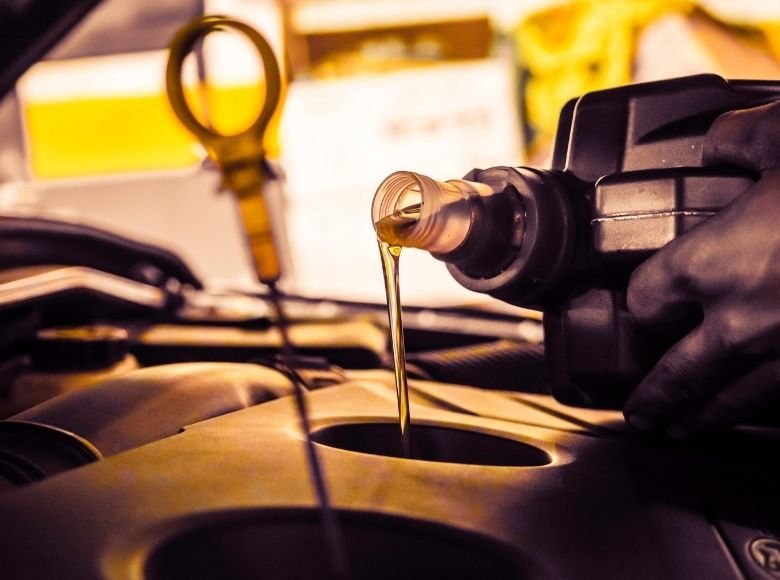Changing the oil is one of the most essential parts of car maintenance. There are many types of oil available, with different markings. How do you choose the one you need?

Oil – the primary fluid found in a car
Engine oil is responsible for reducing the friction between the moving parts, and without it the engine would not be able to run properly. If we were to start an engine without motor oil, it would quickly destroy the piston rings and bearing shells. Now that we know that the engine needs oil, another question is: what kind? The market offers various types of oil, each with their characteristic codes. In the text below we will try to guide you through the process of choosing the right oil.

Base oil – the foundation of good oil
When discussing oil we usually divide it into three types: mineral, semi-synthetic and synthetic. What are the criteria for each group? To which of these three groups that an oil belongs depends on its composition, namely from what it was manufactured. Base oil is clear oil before the addition of any other ingredients. A total of 5 base oils can be distinguished:
- Group 1 – base oil with less than 90% of saturates. It is produced by solvent refining (the least expensive refining method), which explains its low price. The viscosity index is between 80 and 120,
- Group 2 – in this group the saturate content of the base oil exceeds 90%, and involves a different manufacturing method – hydrocracking. It is used increasingly more often because the price is only slightly higher than group 1 base oil, while having better properties. The viscosity index of the group is between 80 and 120,
- Group 3 – base oils in this group also contain over 90% of saturates but their viscosity exceeds 120. These are subjected to hydrocracking repeated several times to obtain an even clearer base oil.
- Group 4 – base oils in this group are called poly-alpha-olefins (PAO). These are synthetic oils produced through the process of synthesizing. Products belonging to this group display much better properties than the previous ones, but they are more expensive,
- Group 5 – this group contains base oils which do not belong to the other four groups, namely silicones, phosphate esters, polyalkylene glycols etc. Base oils in this group are sometimes mixed with other base oils in order to achieve the desired properties, e.g., extending the oil change intervals.
To put it briefly, we can assume that the higher the oil viscosity, the better it is. This is not always just the result of the base oil itself, but also the additives. Still, generally speaking, a viscosity index over 130 is a feature of high-quality oils whereas those with a viscosity over 150 are of very high quality.

Mysterious packaging
The packaging used for engine oils typically has code markings like 0W30, 5W40, 10W50 or 15W60. Some people claim that 0Wxx means synthetic oils, 5Wxx and 10Wxx semi-synthetic oils, while 15Wxx are mineral oils. This is not true because we can now find all types of oil in a synthetic variant. Whether the oil is synthetic, semi-synthetic or mineral is determined by the base oil. Base oils from groups 1-3 are mineral oils, 4 and 5 are synthetic, while semi-synthetic oils are some combination of the two. What do the individual numbers mean on the package codes?
- The numbers before the “W”, usually 0, 5, 10 or 15, describe the viscosity at low temperatures. The lower the number, the lower the temperature at which it can be used.
- The numbers after the “W”, usually 30, 40, 50 or 60, describe the viscosity at high temperatures. The higher the number, the higher the maximum ambient temperature at which the oil can be used.
This means that a 15W50 synthetic oil possesses better lubricating properties at higher temperatures and, because of its viscosity, it is better at heat dissipation than an 0W30 synthetic oil. However, it would not be suitable for use at low temperatures. The codes for the appropriate oil for specific engines are usually provided by the manufacturer, either on the oil filler cap or in the user manual. New engines generally require 0W30 or 5W30 oils.

Difficult choice
How should you choose an oil? For new cars the oil should be synthetic and have the same parameters as envisioned by the manufacturer. Appropriate additives are also important. It is worth checking whether the oil has a high zinc content to improve its properties and limit wear of the moving parts. Engines over ten years old will work with synthetic, semi-synthetic and mineral oil. Before changing the oil in an older engine, it is recommended to also check its condition. Should it be unsatisfactory then it is best to choose detergent-free oil, otherwise the oil consumption could increase. Selecting the oil is a key aspect of car maintenance, as it is one of the factors that determines how long your engine remains in optimal condition. The PCC Group features a wide range of products for motor oil and lubricant manufacturers – from base oils to additives improving lubricity.